
Vertebrates (pdf)
Finless porpoises in Wuhan, China (pdf)
by Milla Fok and Tracy Pang
In the internship programme organized by the Ocean Park Conservation Foundation Hong Kong (OPCFHK) and the Swire Institute of Marine Science (SWIMS), we worked on a conservation project on two endemic cetaceans, the Yangtze Finless Porpoise (Neophocaena phocaenoides asiaeorientalis) (Fig. 1) and the Baiji (Lipotes vexillifer) (Fig. 2), in the Yangtze River and Poyang Lake with the Institute of Hydrobiology (IHB) of The Chinese Academy of Sciences in China.
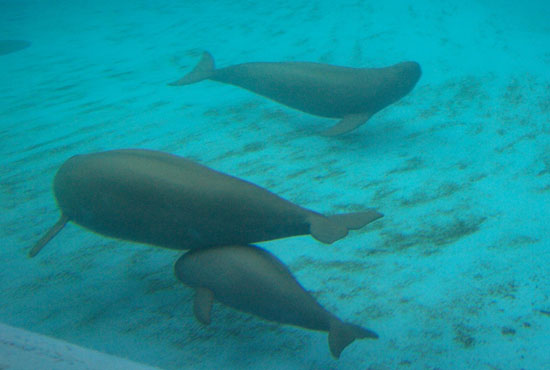 |
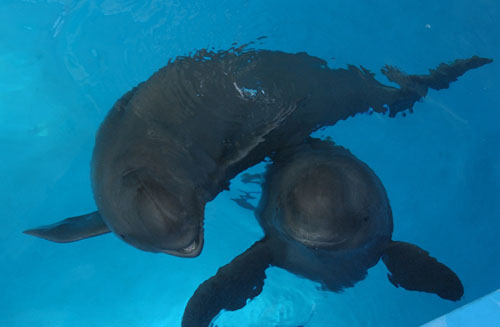 |
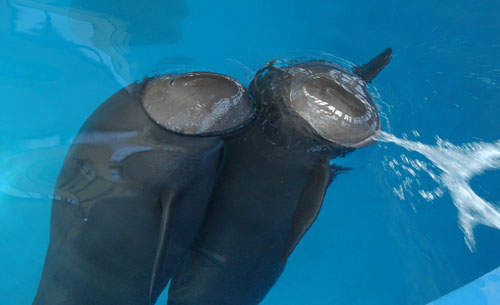 |
| Fig. 1. The Yangtze Finless Porpoise (Neophocaena phocaenoides asiaeorientalis) |
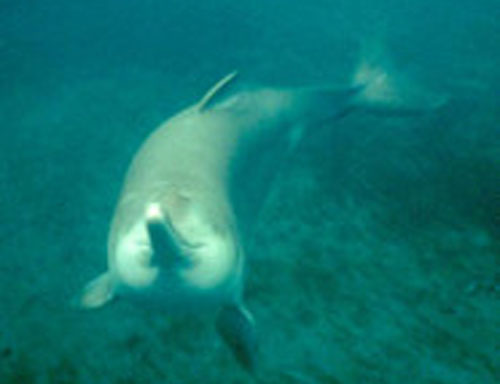 |
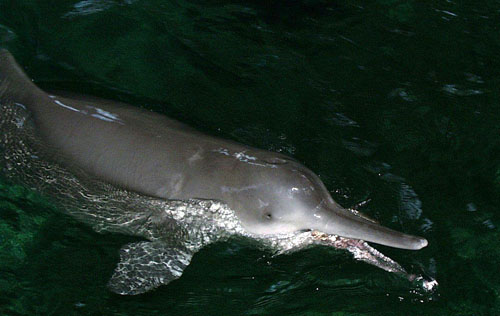 |
| Fig. 2. The Baiji (Lipotes vexillifer) |
The Yangtze Finless Porpoise and the Baiji are freshwater cetaceans which inhabit the main stream of the middle and lower reaches of Yangtze River. They used to be widely distributed in Dongting and Poyang Lakes. Unfortunately, with the rapid growth in fisheries boat, traffic and the dredging industry, their populations decreased rapidly. Recent surveys could not locate any Baiji, and it was estimated that only about two to three hundred porpoises still inhabit Poyang Lake.
To evaluate the impacts of human activities on the cetaceanís survival, visual and acoustic studies on their populations and daily movements are crucial for effective conservation measures in the future.
We took part in a five-day vessel-based daytime survey (17 to 21 November 2005) in the outlet of Poyang Lake and the adjacent area connecting the Yangtze River (Fig. 3 & 4). During zig-zag line transects and fixed-point surveys, the number and size of each group of porpoises, their distance from our boats and time of the day were recorded. In total, over 200 porpoises, but not one Baiji, were sighted. Acoustic data-loggers were also lowered into the river to record the ultrasonic signals emitted by porpoises. By comparing visual observations and acoustic data, a correlation is hopefully to be developed for future estimation of the numbers of cetaceans during night-time acoustic surveys
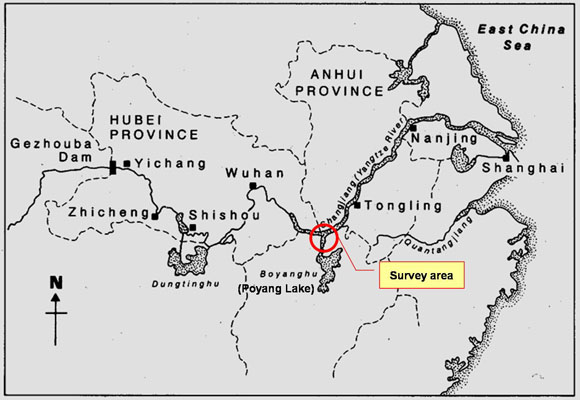 |
| Fig. 3. Survey area encircled |
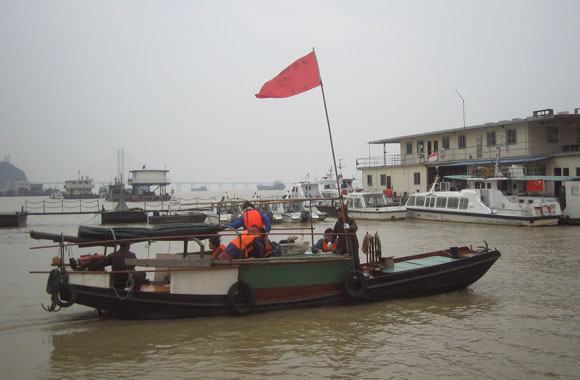 |
| Fig. 4. Survey boat |
The major reason for the rapid reduction in the cetacean populations is thought to be habitat destruction. Before our trip, we had no idea about how much the sand-dredging activities were deteriorating the porpoiseís habitat. Hundreds of huge barges and dredgers were seen during our short stay in Poyang Lake (Fig. 5, 6 & 7). Dredging activities have been so prevalent in Poyang Lake in recent years with the increasing demand for sand from coastal developing regions like Shanghai. In addition to the serious pollution problem, propellers of the barges do, occasionally, hurt or even kill the cetaceans by cutting into their bodies.
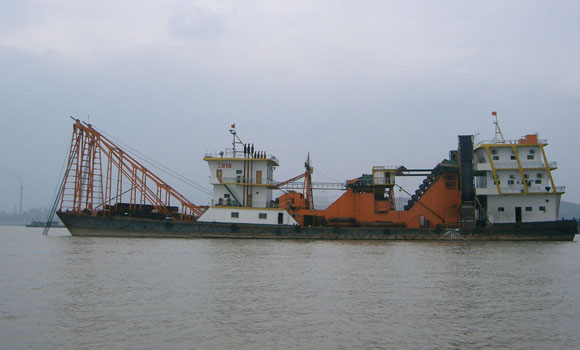 |
| Fig. 5. A dredger |
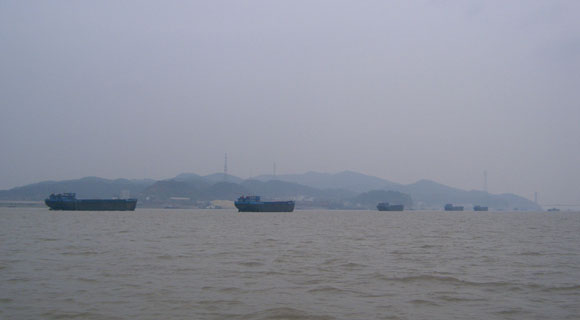 |
| Fig. 6. Barges marching towards Poyang Lake |
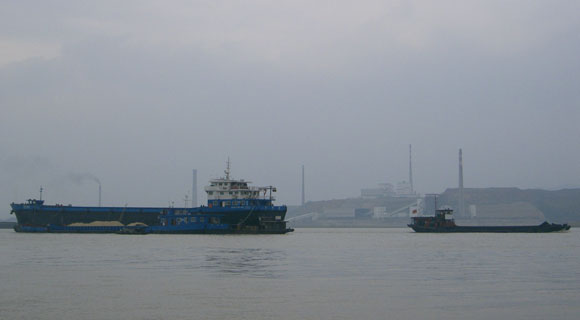 |
| Fig. 7. Two similar barges with (left) and without (right) a full load of sands. |
Recent studies indicated that there may be no interaction between the populations in the Lake and the River. This may be attributable to the infrastructure and other construction work at the mouth of the Poyang Lake (Fig. 8), making porpoise populations from either side of the bridges unwilling to pass them, especially during dry season when the river is narrower. This isolation effect could intensify the hardships experienced by the already depressed populations.
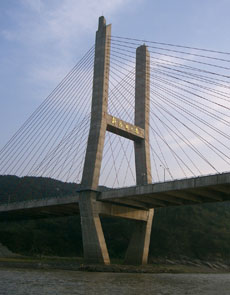 |
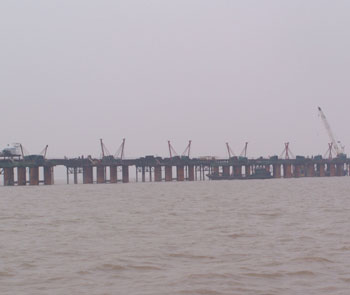 |
| Fig. 8 Poyang Lake bridge and another bridge under construction nearby | |
We also visited the Baiji Dophinarium, the headquarters for captive breeding and research on the Baiji and Finless Porpoise. There are 5 porpoises, including one calf, living in the captive pools (Fig. 9). The calf is about a meter long. Its birth in July overwhelmed the world and is a breakthrough toward successful captive breeding techniques of Yangtze Finless Porpoise. With growing concern over declining populations of Yangtze Finless Porpoise in the Yangtze River, Poyang Lake and Dongting Lake, release of captive individuals may, hopefully, be able to save the declining population from extinction.
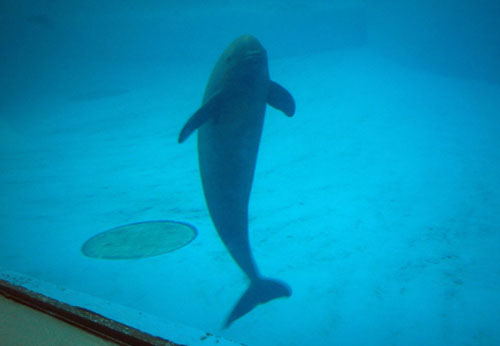 |
| Fig. 9. Captive freshwater finless porpoise in Baiji Dophinarium |
The Wuhan Baiji Conservation Foundation was launched in 1996, aimed at sourcing financial support and raising awareness amongst the general public towards the conservation of the mammals. Two national Baiji reserves, one semi-natural, protection stations and provincial reserves have been set up to house Baiji and Finless Porpoise and provide a disturbance-free habitat for them to reproduce.
We would like to express our gratitude to the OPCFHK and SWIMS for their support of such a meaningful programme. Special thanks to Dr. Kexiong Wang and Mr. Zhuo Wei from IHB for their patience and guidance during our internship; their passion in conserving these lovely creatures has really impressed us.
P.18-20
|
Porcupine! |
 Copyright © 2000 |
